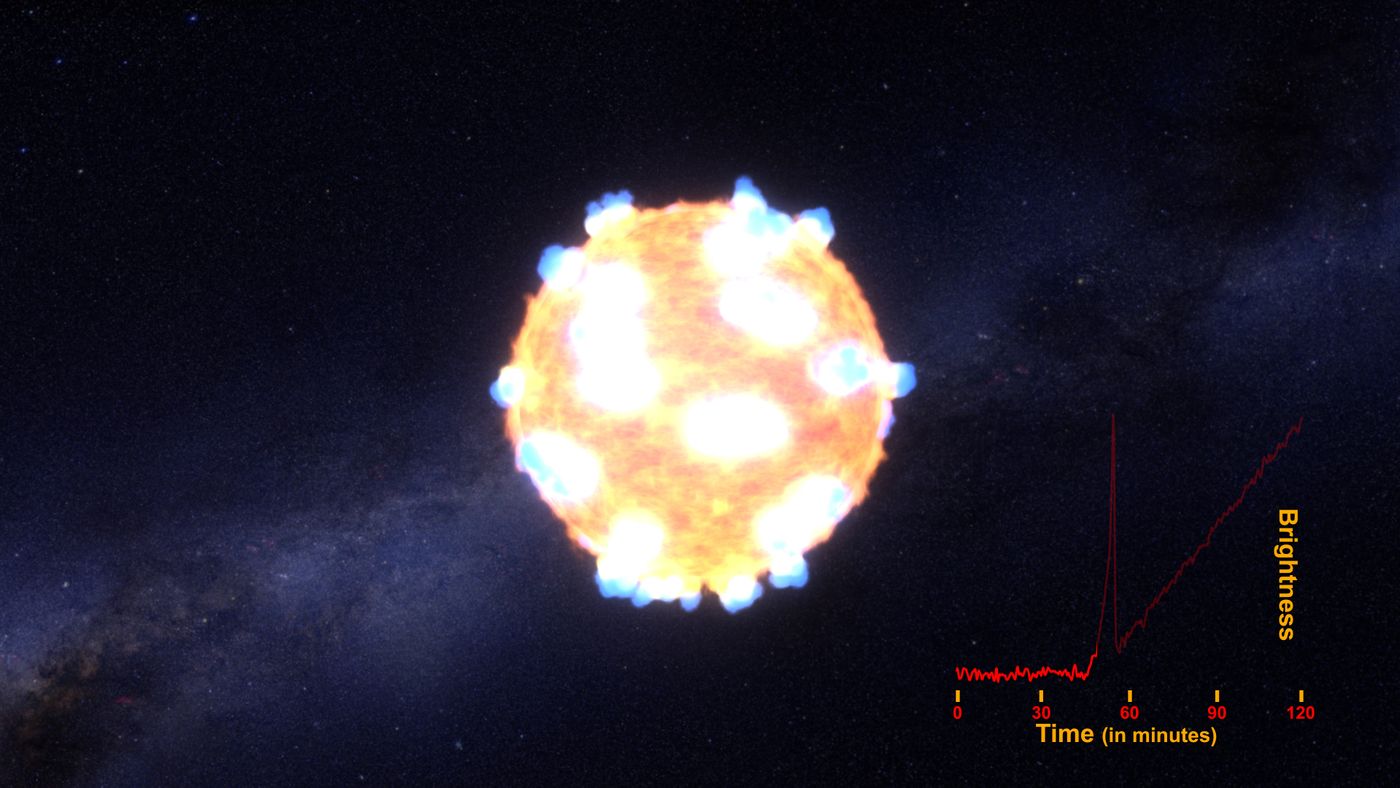For the First Time, Scientists Witness Shockwaves From a Supernova
It’s not very often that astronomers get the chance to observe a star exploding in space. In fact, it’s even rarer when astronomers actually see the shockwave from one of these supernova phenomenon.
Nevertheless, NASA’s Kepler space telescope has proven quite useful in this respect, because it had its sights dialed in at just the right place at the right time. Star KSN 2011d, which is about 1.2 billion light years away, exploded while Kepler was pointed at it, and astronomers got not only a first row seat to the supernova, but also got to see the shockwave produced by the explosion.

“It's like the shockwave from a nuclear bomb, only much bigger, and no one gets hurt,” Dr Brad Tucker of the Australian National University said in a statement. "The star was so large that the shockwave did not travel all the way to the surface. We are really probing the process of blowing up."
As explained in a paper published in the Astrophysical Journal the star was one of two in the region that Kepler was observing, and this one has a radius estimated to be about 270 times bigger than that of our Sun. Interestingly, that was the smaller one. The bigger star, dubbed KSN 2011a had a radius that was about 460 times that of our Sun.
Although the shockwave was visible, it didn't quite have the power to break the surface of the star due to its sheer size, hence why it looks like there are blue plasma jets firing from the surface of the star in the image above.
Trying to understand how supernova explosions occur is an ongoing battle for astronomers. We seldom get to see them happen, and it can be impossible to predict when a star is nearing the end of its life.
This observation of a supernova explosion before, during, and after the event will give scientists a new view into the world of our universe and help us to learn more about how our universe works and how we came to be.
A video animation has been uploaded to YouTube to better illustrate what it was that astronomers saw at the time of the discovery:
Being able to observe these supernova flashes early on gives scientists a sneak peak of the whole process. From this process, we can better theorize what's going on behind the scenes and conduct experiments that will help us model similar situations to explain why these things happen.
Source: Australian National University








